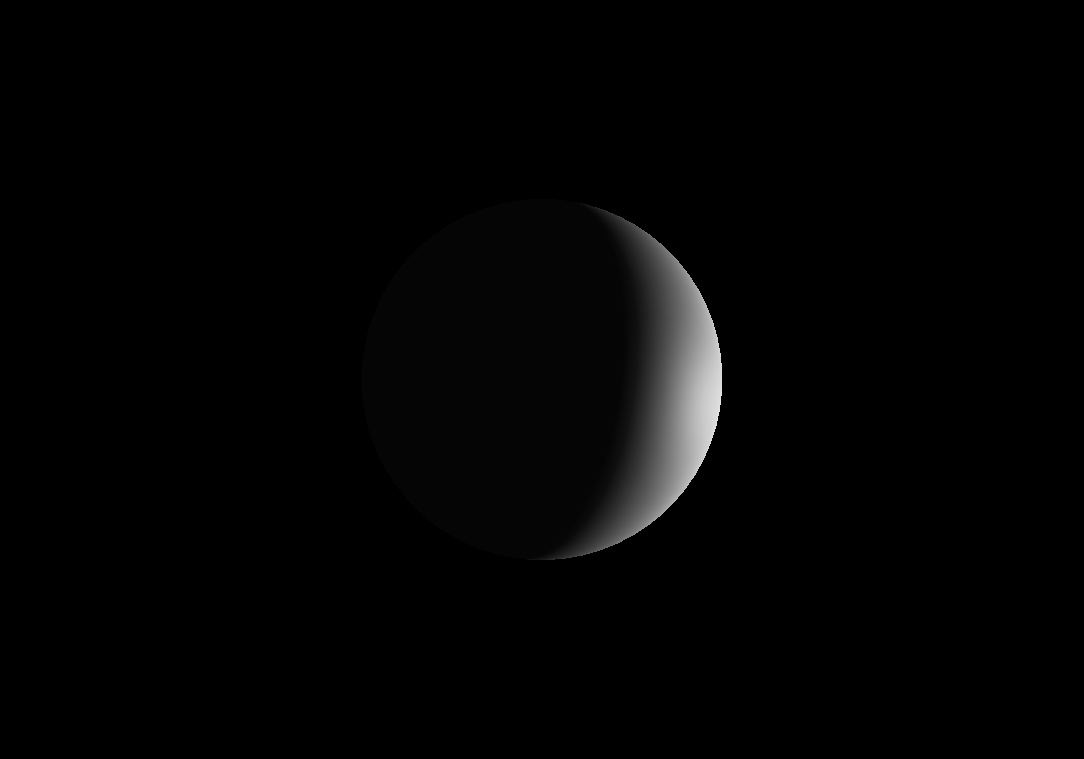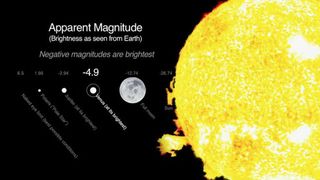Venus Now Shining at Its Brightest: How to See It

Venus is shining at its brightest in the low southwestern night sky just after sunset, making it a fine time for stargazers to observe the brilliant planet, weather permitting.
Venus' dazzling brightness is the result of some cosmic geometry. As the planet moves around the sun, observers on Earth can see it illuminated from all angles. This causes Venus to pass through "phases" similar to the moon.
When Venus is on the far side of the sun in relation to Earth, a point called "superior conjunction," it is fully illuminated from our point of view, and we see it as a "full Venus." It is 100-percent illuminated but far away, only 10 arc seconds in diameter. [10 Weirdest Facts About Venus]
When Venus is at "greatest elongation," farthest from the sun in our sky, as it was on November 1, we see it as a "half Venus." When the passes between Earth and the sun, as it will on Jan. 11, called "inferior conjunction," it is illuminated from behind, just like the new moon.
The brightness we see from Venus depends on two things: its phase and the planet's distance from Earth. Venus should be brightest at its "full" phase, like the moon, but at that time it is at its furthest from us. At "half" phase, as it was on Nov. 1, only half of the planet is illuminated, but it is much brighter because it is much closer.
As Venus nears inferior conjunction, its illuminated portion shrinks down to a narrow sliver. This causes it to fade in brightness. But it is also getting closer to us, which makes it brighten.

This week, these two factors balance out, and we will see Venus at its very brightest. It is neither "half Venus" (50 percent illuminated, 25 arc seconds in diameter) or "new Venus" (0-percent illuminated, 60 arc seconds in diameter), but somewhere in between. In fact it is 26-percent illuminated and 41 arc seconds in diameter. This is the "Goldilocks point" when distance and phase combine to produce the greatest brightness.
Get the Space.com Newsletter
Breaking space news, the latest updates on rocket launches, skywatching events and more!
This week Venus will shine with a brightness of –4.9 magnitude, on the upside-down brightness scale that astronomers use. It is based on the brightest stars being magnitude 1 and the faintest stars visible being magnitude 6. Thus the brighter the object, the smaller its magnitude number. Astronomers extended this scale into the negative for really bright objects.
Sirius, the brightest star in the night sky, is a magnitude –1.4 star. The full moon, meanwhile, is a magnitude –12.7 and the sun is –26.8. So Venus will be considerably brighter than Sirius this week, but nowhere near as bright as the moon. It is bright enough to cast shadows, when observed on a moonless night from a dark location.
Even though Venus is the brightest object in the night sky other than the moon, surprisingly few people have seen it in its current apparition. That's because at this time of year the ecliptic, the path of the planets across the sky, makes a very shallow angle with the horizon in the northern hemisphere. Although Venus is very bright, it is also very low in the sky, so is often blocked by clouds or buildings.
This week, find yourself a location with a low southwestern horizon and look for Venus. Watch it as it slowly sets, and see if you can see it change color from white to orange to red as it nears the horizon, just as the sun and moon do.
Did you know that you can see Venus in daylight? The best time to look for it will be on Thursday this week. Look for the narrow crescent moon in the afternoon sky above and to the left of the sun. Use that to locate Venus, just below the moon. You may need binoculars to first spot it, but once you know where it is relative to the moon, it’s very easy to see.
Editor's note: If you have an amazing photo of Venus or any other night sky object that you'd like to share for a possible story or image gallery, please contact managing editor Tariq Malik at spacephotos@space.com.
This article was provided to SPACE.com by Starry Night Education, the leader in space science curriculum solutions. Follow Starry Night on Twitter @StarryNightEdu. Follow us @Spacedotcom, Facebook and Google+. Original article on SPACE.com.
Join our Space Forums to keep talking space on the latest missions, night sky and more! And if you have a news tip, correction or comment, let us know at: community@space.com.

Geoff Gaherty was Space.com's Night Sky columnist and in partnership with Starry Night software and a dedicated amateur astronomer who sought to share the wonders of the night sky with the world. Based in Canada, Geoff studied mathematics and physics at McGill University and earned a Ph.D. in anthropology from the University of Toronto, all while pursuing a passion for the night sky and serving as an astronomy communicator. He credited a partial solar eclipse observed in 1946 (at age 5) and his 1957 sighting of the Comet Arend-Roland as a teenager for sparking his interest in amateur astronomy. In 2008, Geoff won the Chant Medal from the Royal Astronomical Society of Canada, an award given to a Canadian amateur astronomer in recognition of their lifetime achievements. Sadly, Geoff passed away July 7, 2016 due to complications from a kidney transplant, but his legacy continues at Starry Night.












